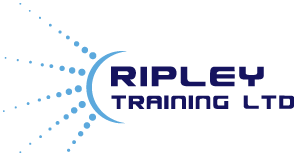When it comes to recruiting and managing your employees, this is somewhat of a minefield. There are so many things to consider – but one thing’s for sure: you want the best people to work in your company. So what are your options?
“Never tell people how to do things. Tell them what to do and they will surprise you with their ingenuity.” – George Patton
Attracting the best and the brightest employees isn’t always easy. It can take a considerable amount of time to find, interview and place the ideal candidate in a role – and even then, there is no guarantee they will be the perfect fit for the role once they get into it. Building a strong team is a crucial factor in your company’s ability to operate smoothly and navigate the changing business landscape. To increase productivity and motivation, we recommend you start off by doing your research:
1. Put out your feelers
• Ask within your own company if anyone knows of somebody suitable and offer a finder’s fee (paid once the new staff member has been at the company for a year)
• Don’t forget suppliers, customers and clients who are often a great source of suggestions
• Consider using LinkedIn and other forms of social media
• Use your local Job Centre to help you upload the job online and at the local job centre
• Consider Apprenticeships
• To save time you might use a respected firm of recruitment consultants
2. Try not to recruit in a hurry
We know you really need someone good for your role – but finding the best person is worth the time (think about the costs involved in re-recruitment if things don’t work out). Flawed recruitment is commonly the result of unnecessary time pressures.
3. Don’t use a committee to write the job description!
It might seem necessary – you want to input from your colleagues and senior management. But sometimes, not everyone understands the exact requirements of a job role better than you do as the line manager.
• Instead, visualise the job description as a creative and detailed road sign that will raise the curiosity of the person you are targeting (it’s as much about attracting the right candidates)
• Don’t forget the person who is leaving in existing role to get their feedback in refining the job description for the next person. Ideally retain them and find out why they are leaving – if they are a valuable member of the team you might be able to encourage them to stay!
• Speak to those the role will support (e.g. internal and external customers) to ensure the role being offered is fit for purpose
• Consider planned changes in the business and ensure the role reflects these forthcoming changes therefore manage the new persons expectations and recruiting the right person moving forward
• Use the job description to get the candidate to agree or disagree. Get them to engage with the idea of coming into your world and bringing changes that can invigorate your processes
• Communicate the ideas that your company represents and provide details of your company’s unique perspective of your market
• Consider including a job specification with the job description that outlines the essential and desirable qualities – this can help potential applicants decide to apply and ensure you are applying a fair and consistent approach to recruitment and selection by measuring against this criteria.
4. Competition in recruiting
If the market is very competitive, then don’t necessarily compete for the same audience. Sometimes your ideal candidate is working in a related field, for example: if you’re looking for a marketing manager you could extend your search into sales and business development. You might just find that ‘diamond in the rough’.
5. Treat their CV with a pinch of salt
Increasingly candidates are getting professional help in writing/creating their CV. Use it only as a guide to whether this person would be a good fit for your team. What you see on paper is not always the most accurate reflection of a person’s true self – you need to meet them in person and see how their personality shines through. Will they be a great fit into the company culture? How do they respond to challenging job interview questions? Are they articulate and confident? All of these things can only be gauged by meeting in person. Also consider what other tests you need to put in place to measure their level of competence (skills and knowledge) relating to the needs of the role. These can include presentations, in-tray exercises, problem solving and decision making, computer tests on MS Word, Excel or other role specific packages they will be required to use in the job.
Recruiting the best staff with help from Ripley Training
Recruiting the right people, in the right numbers and with the right skills, at the right time is vital to the success of any business. Our Recruitment & Selection Skills Course focuses on cost effective and time efficient ways of ensuring that your recruitment and selection processes not only attract the best candidates to your business, but also comply with all the current and anticipated legal requirements. To find out more, why not give us a call on 01423-861-122? Or fill in our short contact form – we’d love to help you!

